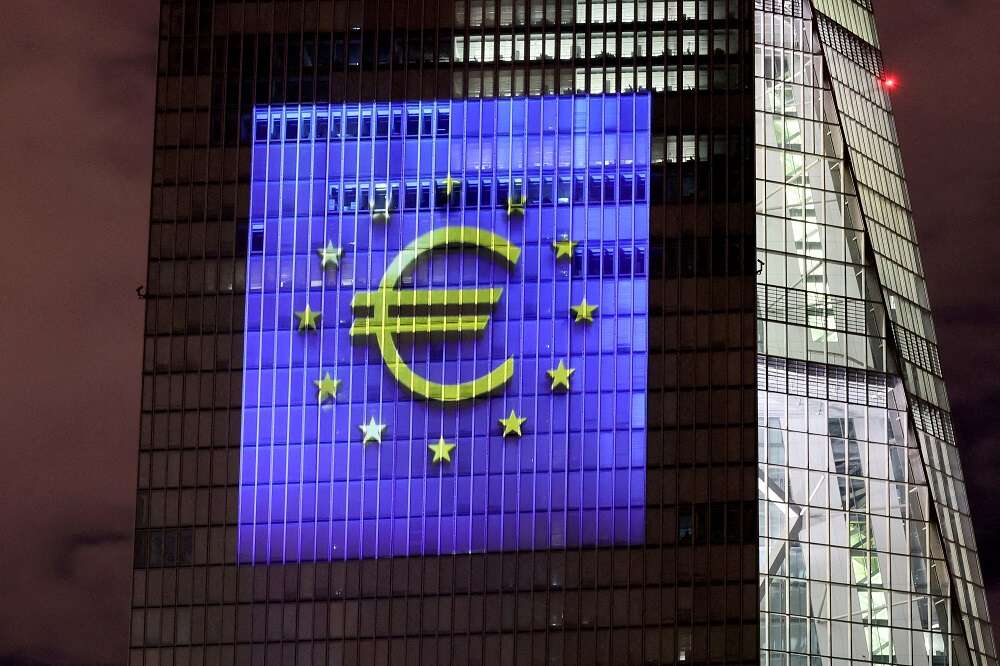
By Dhara Ranasinghe
LONDON (Reuters) – The rise in European bond yields is alarming some economists, who warn that Italy and Greece in particular do not have much wiggle room before their debt servicing burden starts rising, rekindling memories of the 2011-2012 euro debt crisis.
Just five months into the year and even before the European Central Bank tightens policy, French and German 10-year debt yields are up over 120 basis points and set for their biggest annual surge since 1999 – the year the euro was born. Spanish, Italian and Portuguese yields are up more than 155 bps.
Higher yields are not confined to Europe – Janus Henderson predicts debt interest costs globally will rise by almost 15% this year compared with 2021. But the euro bloc, with some of the world’s most highly indebted sovereigns, is among the most vulnerable.
Indebtedness there has actually risen since the 2010-2012 crisis, when spiralling borrowing costs in Ireland and southern Europe threatened the very existence of the euro bloc, partly a result of the unexpected burden of the COVID-19 pandemic.
“If rates were to rise sharply for longer, we might well be facing Euro Crisis 2.0,” Deutsche Bank investment strategist Maximilian Uleer said.
Uleer said while interest costs had fallen since 2011, debt as a share of gross domestic product was higher, especially in countries that were at the epicentre of the 2011 crisis.
So if Italian 10-year bond yields were to rise by 2% next year, its interest burden relative to GDP would be back at 2011 levels by end-2025, Uleer estimates.
The process has already started. Yields on Italian seven-year bonds, which represent the country’s average debt maturity, are now at 2.65%, well above the average or implicit interest rate it has been paying, as estimated by the European Commission at 2.4%.
This matters because any new debt issued from now will likely raise the country’s interest payment costs.
French yields are also above the implicit interest rate, estimated at 1.1%, Spanish yields are close to the 2% implicit rate there. This last happened in 2011-2012, Pictet Asset Management noted.
NO SWEAT?
For all that, debt sustainability is not an imminent risk.
Borrowing costs remain low by historical standards, while an average debt maturity of around seven years will shield most countries from near-term yield spikes.
Spain for instance needs to refinance only 15% of its debt this year, a Spanish Treasury official told Reuters, adding that the “deep mark” from the crisis had forced changes to debt portfolios, including by increasing debt maturities.
Even for Italy, the direct fiscal cost of rising rates “looks manageable” according to S&P Global European sovereign analyst Frank Gill.
Between January and end-April, Italy pre-financed two-thirds of its maximum full-year net borrowing target of 80 billion euros and at an average refinancing cost of 0.54%, Gill noted.
“The bigger risk is that higher rates start to drag on growth,” he said.
SLOWING GROWTH, RISING YIELDS
Rising debt is of particular concern, given growth threats; the International Monetary Fund sees the euro area economy expanding this year by just 2.8%, versus a previous 3.9% prediction.
“We need growth,” said Pictet Wealth Management fixed income strategist Laureline Renaud-Chatelain. “That’s a bit of a worry, as you have the ECB that will, maybe, raise rates even in a context where we have seen growth decelerating.”
Unease has driven up the cost of insuring against a debt default in Italy, Spain and Portugal to the highest since November 2020 in the credit default swaps market.
Italy and Greece, with debt-to-GDP ratios of 150% and 200% respectively, up from around 120% and 175% in 2011, are in particular focus.
Jim Leaviss, chief investment officer at M&G Investments for public fixed income, highlights as crucial the 3% level on Italian 10-year yields, breached recently for the first time since 2018.
“If yields stay above 3%, then you would expect the debt burden in Italy to start rising,” Leaviss said.
Goldman Sachs, meanwhile, calculates that a 50 bps rise in yields from current levels would put Italy’s debt-GDP ratio on a rising path from 2025 onwards.
In Greece, 10-year yields above 3% more than double the 1.6% weighted average cost of the debt profile estimated over 2022, Scope Ratings economist Dennis Shen said.
That means the average cost of servicing outstanding Greek debt is “for the first time in years increasing, rather than decreasing as the government refinances,” Shen added.
(Reporting by Dhara Ranasinghe; additional reporting by Belen Carreno in Madrid; Editing by Sujata Rao and Catherine Evans)


